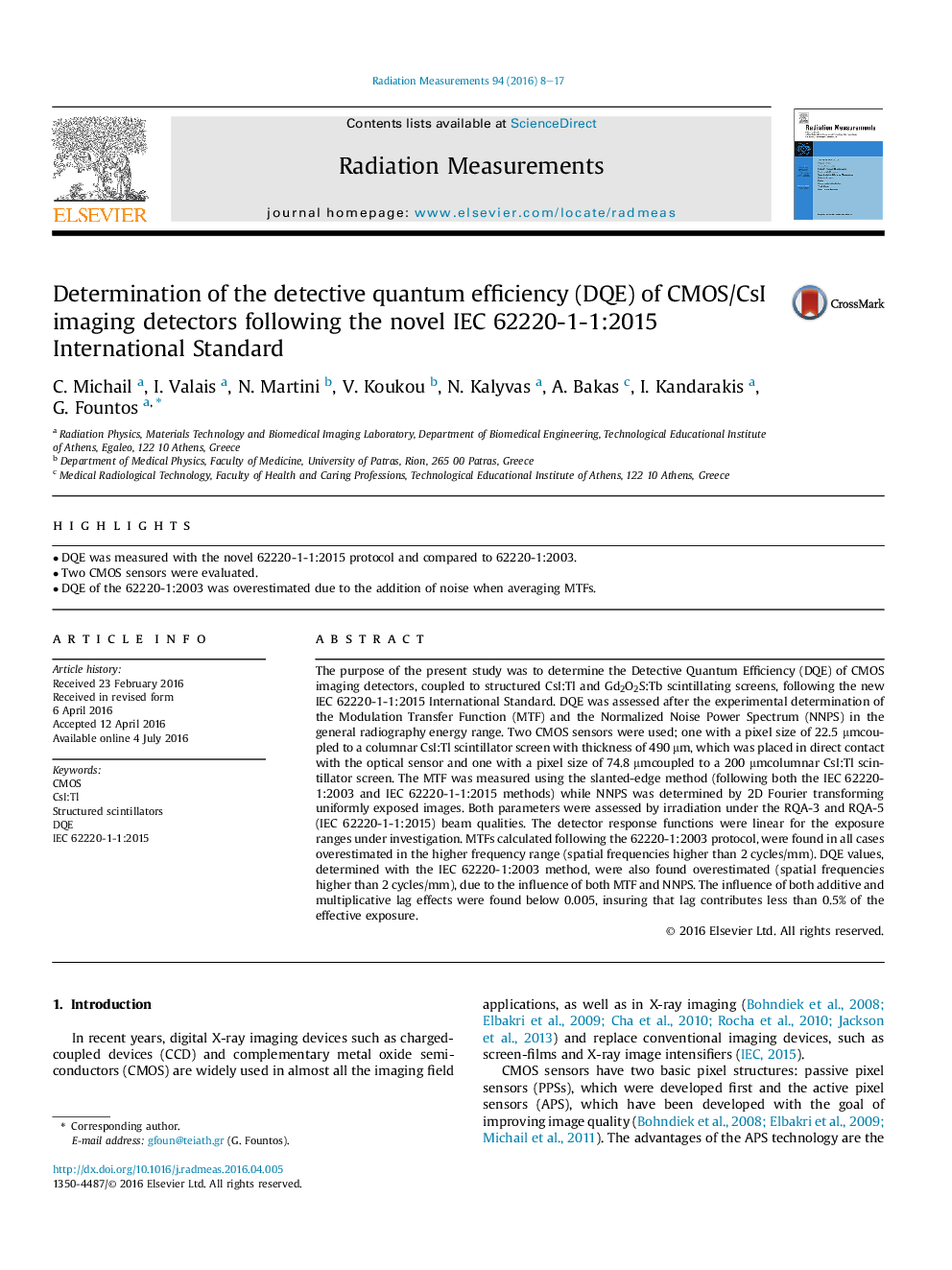| Article ID | Journal | Published Year | Pages | File Type |
|---|---|---|---|---|
| 1883044 | Radiation Measurements | 2016 | 10 Pages |
•DQE was measured with the novel 62220-1-1:2015 protocol and compared to 62220-1:2003.•Two CMOS sensors were evaluated.•DQE of the 62220-1:2003 was overestimated due to the addition of noise when averaging MTFs.
The purpose of the present study was to determine the Detective Quantum Efficiency (DQE) of CMOS imaging detectors, coupled to structured CsI:Tl and Gd2O2S:Tb scintillating screens, following the new IEC 62220-1-1:2015 International Standard. DQE was assessed after the experimental determination of the Modulation Transfer Function (MTF) and the Normalized Noise Power Spectrum (NNPS) in the general radiography energy range. Two CMOS sensors were used; one with a pixel size of 22.5 μmcoupled to a columnar CsI:Tl scintillator screen with thickness of 490 μm, which was placed in direct contact with the optical sensor and one with a pixel size of 74.8 μmcoupled to a 200 μmcolumnar CsI:Tl scintillator screen. The MTF was measured using the slanted-edge method (following both the IEC 62220-1:2003 and IEC 62220-1-1:2015 methods) while NNPS was determined by 2D Fourier transforming uniformly exposed images. Both parameters were assessed by irradiation under the RQA-3 and RQA-5 (IEC 62220-1-1:2015) beam qualities. The detector response functions were linear for the exposure ranges under investigation. MTFs calculated following the 62220-1:2003 protocol, were found in all cases overestimated in the higher frequency range (spatial frequencies higher than 2 cycles/mm). DQE values, determined with the IEC 62220-1:2003 method, were also found overestimated (spatial frequencies higher than 2 cycles/mm), due to the influence of both MTF and NNPS. The influence of both additive and multiplicative lag effects were found below 0.005, insuring that lag contributes less than 0.5% of the effective exposure.
